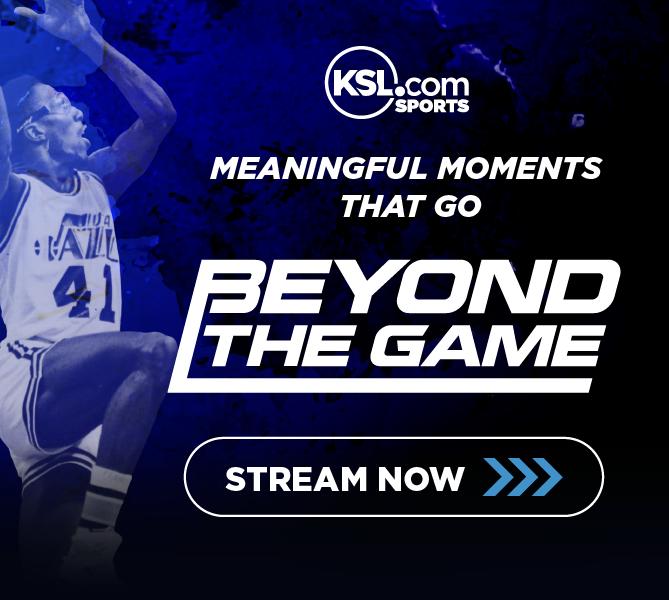Estimated read time: 4-5 minutes
- The $2.8 billion House v. NCAA settlement was approved, allowing revenue sharing.
- NCAA President Charlie Baker praised the settlement as a stabilizing step for sports.
- Big 12's Brett Yormark called it a new era, emphasizing student-athlete success.
SALT LAKE CITY — Count Brett Yormark in favor of the settlement approval of the House v. NCAA lawsuit that U.S. Judge Claudia Wilken issued late Friday night.
He's not alone, either.
The court filing that approved the $2.8 billion settlement of a number of lawsuits — all coalesced into the one led by former Arizona State swimmer Grant House five years ago — was approved late Friday night as word of the filing came down shortly after 7 p.m.
The decision, which was not unexpected in many ways except for its timing, paves the way for universities to share up to $20.5 million in revenue with athletes over the next year and provides backpay of $2.7 billion paid to former players over the next decade who have were barred from taking advantage of current name, image and likeness legislation.
It didn't take long for NCAA lawmakers and officials to laud the effort, with NCAA President Charlie Baker immediately saying the deal "opens a pathway to begin stabilizing college sports."
Count Brett Yormark among the believers, as well.
The Big 12 commissioner released a statement Friday evening on the league's social media calling the settlement the start of a "new era of college athletics."
"As we enter the new era of college athletics, it is crucial we do so with structure, transparency, and the success of student-athletes in mind — this settlement and new model will ensure that happens," he said. "I look forward to working alongside my colleagues to implement t his new system that prioritizes fairness and opportunity for all student-athletes and institutions."
— Big 12 Conference (@Big12Conference) June 7, 2025
The NCAA launched a website with some of its lauded changes as a result of the settlement, including:
- Up to $20 million in direct financial benefits from schools annually (in addition to what it calls $4 billion in scholarships each year)
- Guaranteed scholarships at the Division I level
- Elevated heath and well-being services, including medical insurance for injuries and out-of-pocket copayments and deductibles not covered by insurance
- Access to funds to finish a college degree for up to 10 years after leaving the university
- Post-collegiate eligibility insurance
The settlement will create the new College Sports Commission under the direction of the power conferences to oversee the terms and enforce new rules, with former Major League Baseball executive Bryan Seeley named first CEO.
That includes setting up a clearinghouse for to approve all NIL deals worth over $600. The clearinghouse, called "NIL Go," will be run by Deloitte — though it's expect to face legal challenges, according to multiple reports.
The NIL Go portal will launch Wednesday, and schools have until June 15 to fully commit to revenue sharing that goes into effect July 1.
Defendant schools in the lawsuit were automatically designated to opt in under terms of the settlement, but most conferences and schools — including many at the mid-major level — have already said they would opt-in to the settlement when it was passed.
That includes the Big West, one of the smaller conferences in the country by geography that added Utah Valley beginning July 1, 2026. In a teleconference with reporters Friday morning (before the settlement was reached), commissioner Dan Butterly told reporters that each of his member schools planned to opt in to the settlement terms.
The settlement was also a longstanding conversation with Utah Valley as the two sides negotiated to come together.
"Our institutions are as prepared as they can be at the moment, understanding that the full terms of the settlement have not been outlined," said Butterly, speaking Friday morning before the final approval. "The NCAA and the implementation committee have not provided much detail yet of what it means to opt in. But the implementation work has been aggressive, and I'm hopeful ... that they give us a bit of time with the implementation outcomes and what it means for our schools to opt in."
From Utah Valley's perspective, implementation of the House settlement may look a bit different for mid-major schools compared to their power conference counterparts.
"The changing landscape of being able to fully scholarship an athletic program is a different deal for us," admitted Utah Valley athletic director Jared Sumsion, adding that the university is prepared for scholarship limits that will come with it. "There are schools across the country that are ready to do that right now, and other schools who might use it as a possibility to decrease their scholarships in certain sports.
"For us, it's really about going to find more resources to be ready for this. That's what we do pretty much every day, and I'm grateful to our administration who has rolled with the punches with us. We're eventually going to punch back, and I think we're in a place that's positive. We're an attractive university, and part of that is being prepared for the future look of the NCAA."








